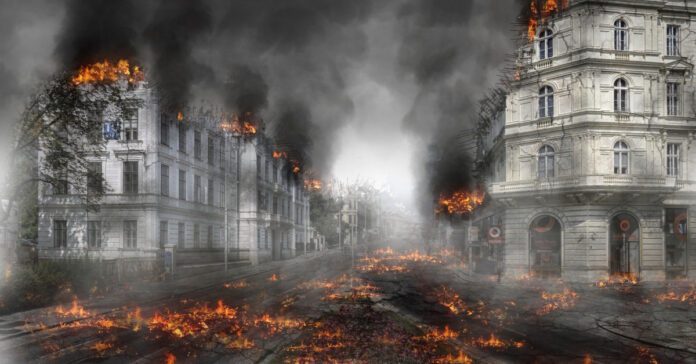There is a great deal of concern since the invasion of Ukraine about whether Vladimir Putin would live up to his threats to use nuclear weapons. What they have not covered in as much detail is what kind of nuclear weapon he might use.
Most of us think of nukes as land-based intercontinental ballistic missiles, submarine launched missiles, nuclear warheads for cruise missiles, and munitions dropped or launched by bombers. These are the big boys, warheads of 100 kilotons up into the multiple -megaton range, known as strategic weapons. What this thinking leaves out is the smaller tactical warheads designed to be used on a battlefield, rather than to take out an entire city. These range from low yield, 1-kiloton or less, up to 10 kilotons. In comparison, the bomb dropped on Hiroshima is estimated at 15 kilotons while the Nagasaki bomb was in the 21 kiloton range.
These non-strategic nuclear munitions include those that artillery and short-range ballistic missiles can launch. They also include anti-ship missiles, anti-submarine munitions, torpedoes with nuclear warheads, and other smaller weapons. Russia also has many dual-use weapons systems which can be armed with conventional or nuclear warheads.
The Quandary
The quandary facing the Europe, the U.S. and NATO is what to do if Putin uses a tactical nuclear weapon in Ukraine, as these articles in Defense One speculate is possible.
The danger, of course, is this would cause a nuclear response and cycle of escalation. Worse yet, a decision not to respond could embolden Putin to use more nukes or to make a first strike using strategic weapons, thinking that the U.S. is too intimidated to respond.
My guess is that at the very least, the use of a nonstrategic nuclear weapon in the Ukraine would trigger an intervention by NATO aircraft using conventional weapons to destroy the launch site and prevent more nuclear weapons from being launched from that location. This, however, would start a direct conflict between Russia and NATO, resulting in World War III, which might move from conventional to nuclear. As in the big, strategic missile kind of nuclear war we should all fear.
Warning Signs
I think we should keep our eyes open for signs of desperation or escalation from Putin and Russia. For example, if protests in Russia get out of hand or he feels they threaten his reign, Putin might use a nuke to show his strength. If he is losing the war, he might use a nuke as part of their “escalate to de-escalate” philosophy.
If Russia steps up the cyberwar and we respond, that would be considered an escalation. Likewise, If the war moves to space, that would be an escalation. Either of these actions would show Putin’s willingness to move beyond Ukraine and take the fight to NATO on another level. I would consider either of these warnings that nuclear weapons might be his next step. If he can’t win the ground war, he may search for a battlefield that he can dominate.
Expect Panic
Should Russia use a small nonstrategic nuke, expect there to be panic across Europe and in the U.S. The vast majority of people cannot differentiate between their ingrained idea of a globe-destroying nuclear war and the use of a single, small nuclear weapon. Be ready to deal with panic, but a single nuke 5,000 miles away is nothing to freak out about (although the next step might be). For more details, see our recent post, Important Information on Surviving a Nuclear Attack.
For my prepper family, the use of nukes is a sign that they should bug out to our house. (See Signs it may be Time to Bugout.) For me, it’s a sign to head to Sam’s Club and send my wife to the grocery store for one last shopping trip.
What to Do
If nuclear arms are used, follow the instructions in this article, and don’t panic. Try to keep your head while those about you are losing theirs. Read up on how to survive fallout, although a few tactical nukes in Europe would not generate enough to worry about this far away. The real danger is if things escalate from there, and that might take days.
If you have a bugout location, it might not be a bad idea to gather your gear and head there, especially if it is not near any missile silos, military bases, large cities, or other likely targets. Once there, refer to the instructions in Nuclear war Survival Skills by Cresson H. Kearny and build your own fallout shelter.
Once the nuclear genie is let out of the bottle, we have no idea what might happen next, but it probably won’t be good. Let’s hope that wiser head prevail and someone takes Putin out before he causes a global nuclear war.








